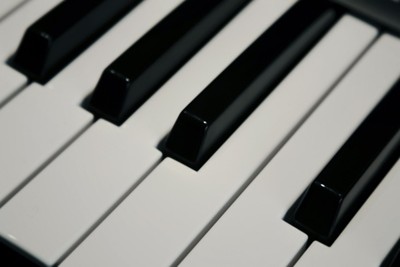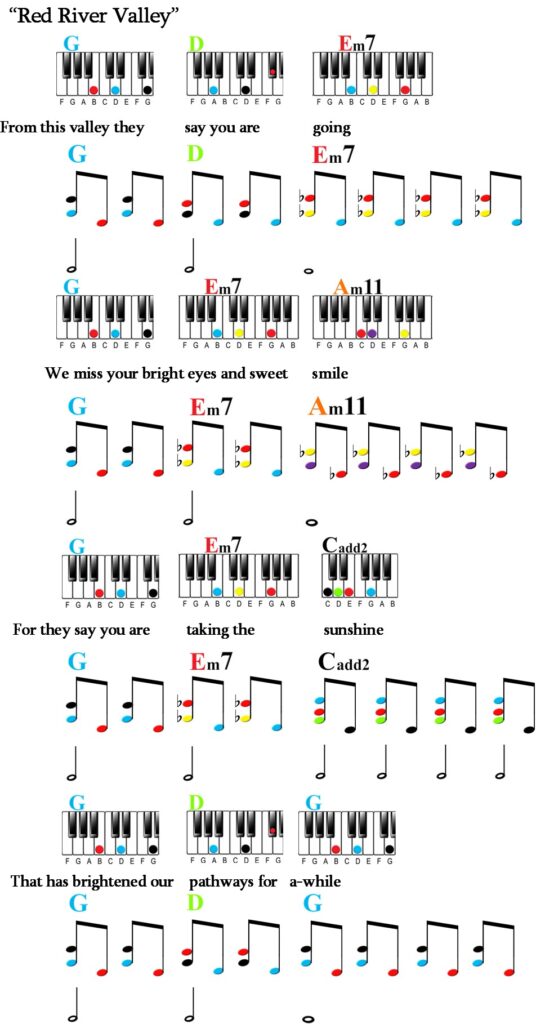Accompanying in music is defined as playing an instrumental or vocal part designed to support or complement a melody. As a piano player, accompanying usually refers to playing a rhythmic arrangement while a singer or instrumentalist plays the melody of a particular piece of music.
When most piano players are asked to play a song on the piano, it’s often assumed that they’re going to play a solo version of any given song. In other words, they’re going to play the melody with their right hand, harmony with their left hand and share the task of any rhythm that the song may encompass with one or both hands to fill things out.

But this isn’t always the case because the dynamics of songs aren’t all the same. You may have a song that’s more characteristically known by the rhythm than the melody. If you don’t play the more rhythmic aspects of the song, it can become lost on those listening to it. In this case, the melody is only secondary and may not be necessary to play at all.
Another reason not to play the melody of a song is if you or someone is singing the melody. It’s only in rare situations where the whole melody is played on the keyboard and sung at the same time.
This can be a breath of fresh air for an aspiring and growing piano player because it’s typically easier to play the harmony and rhythm of a song without having to consistently plunk out the melody. It also sounds more professional because both your left and right hands are free with more voicing and rhythm options.
Playing this type of piano arrangement is referred to as accompanying or “comping” a singer. And let me emphasize that a person or another instrument can provide the melody for the song. The melody can also be implied without even having to be in the song. There’s no wrong way to play music.
Comping doesn’t have to be complicated. A simple arrangement can be a very satisfying way to play a song especially if someone wants to sing the melody.

So what are the skills needed to comp at the piano?
Beyond having basic beginner skills of learning keys of music and chords, knowing simple chord progressions can go a long way. Playing a simple rhythm can provide a very good sounding comping pattern.
So let’s take a look at a very simple song and how you can sound like a pro with a variety of chords and a simple rhythm.
The song is “Red River Valley” (we’ll just look at one verse). I’m going to share this example with you in the key of G Major. We’ll have a variety of Major and minor chords with a simple 8th note break-up rhythm pattern in our right hand.
We’ll use Noteshots to illustrate the rhythm in this piece. To provide clarity, I’ll place the Keyshots above them.
Download this pdf for your convenience if you would like to print this piece or use it on your device.

Even though this is a simple comping arrangement, it’s a good place to start. It also sounds pretty satisfying with the different combinations of chords.
The real key to learning how to comp is to find your favorite music to comp to and build arrangement(s) around.
Here are a few other tips for learning to comp.
Master basic piano skills: Before diving into accompaniment, ensure you have a solid foundation in playing the piano. Learn proper hand position, finger technique, and basic music theory concepts such as reading chord charts or lead sheets, understanding rhythms, and identifying notes on the keyboard.
Develop rhythmic accuracy: Accompaniment requires maintaining a steady and precise rhythm. Practice playing keys of music, arpeggios, and simple songs to develop your musical vocabulary.
Understand chord progressions: Familiarize yourself with common chord progressions used in various musical genres. Learn to identify and play major, minor, and dominant chords in different inversions and voicings. Practice transitioning smoothly between chords to develop muscle memory and fluidity. This is what I like to call developing your kinesthetic sense.

Also, learn the number system. It’s the one ingredient that all professional players use.
Study different accompaniment styles: Explore various accompaniment styles such as pop, jazz, classical, or gospel, depending on your musical preferences. Listen to professional recordings and study the techniques used by pianists in those genres. Pay attention to rhythm patterns, chord voicings, and embellishments that are commonly used.
Analyze and transcribe accompaniment patterns: Select songs or pieces you’d like to accompany and listen attentively to the piano parts. Analyze the accompaniment patterns and chord progressions used. Transcribe the music onto sheet music or a chord chart to help you practice and memorize the patterns.

Practice playing with recordings: Play along with recordings of songs to develop your ability to accompany in real-time. Start with slower tempos and gradually increase the speed as you gain confidence. Focus on matching the rhythm, dynamics, and phrasing of the original performance.
Learn to improvise: Improvisation is an essential skill for accompaniment. Practice improvising melodies, chord progressions, and fills over different songs and styles. Experiment with various scales, modes, and melodic patterns to enhance your improvisational abilities.
Communicate with other musicians: Collaborate with vocalists or instrumentalists to gain experience in accompanying live performances. Pay attention to their cues, dynamics, and timing, and adapt your accompaniment accordingly. This interaction will sharpen your listening skills and ability to support other musicians effectively.
Perform and seek feedback: Regularly perform your accompaniment pieces in front of an audience, whether it’s friends, family, or in formal settings like recitals. Welcome constructive feedback to identify areas for improvement and continue honing your skills.
Remember that learning accompaniment on the piano is a gradual process. It requires dedication and consistent study to develop the aforementioned skills and a willingness to explore. Be patient with yourself and enjoy the journey of becoming a skilled accompanist.
Until next time, Go Play.
Greg Lee
Latest posts by Greg Lee (see all)
- What is a minor/Major 7 Chord? - October 26, 2023
- 7 Chord Substitutions that Professionals Use - October 19, 2023
- 5 Simple Chord Tricks to Sound Amazing - October 5, 2023



